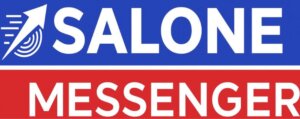By Akim Sesay, Extern Ambassador & Storyteller
Introduction
“Every day, over 1,000 children under the age of 5 die from disease linked to inadequate water, sanitation and hygiene according to UNICEF. This shocking statistics from UNICEF draw attention to the critical importance of addressing water pollution and ensuring access to clean water for all. During my externship with National Geographic and The Nature Conservancy, I gained a deeper understanding of the vital connections between humans and water. I realised that water is not just a resources but a lifeline, deeply intertwined with our health, environment and daily survival. This experience has pinpointed the urgent need to take responsibility in protecting and preserving our freshwater for future generations.
The Crisis
Today, as I visited the stream in my community, I was struck by the sad reality of deterioration. The once vibrant flow of water has slowed to mere trickle, barely enough to meet the needs of the community. I watched children and women gathered at the stream with their buckets in their hands queuing for water that is in close proximity of the waste which lies just few meters away. This paints a tragic picture of how pollution has taken the centre stage on our freshwater resources. The sight was a strong reminder of the urgent need for sustainable practises and the collective responsibility we must all shoulder to protect the waters that sustain us.
Health Risk of Polluted Water
The Consequences of this water crisis goes beyond pollution, it is a direct threat to public health. Woman and children who are the daily water collectors, are exposed to waterborne disease such as: cholera, dysentery and typhoid due to the contamination of the stream. Many locals here in my community has no choice but to use this unsafe water for drinking, cooking and bathing leading to recurring illnesses and worsening health conditions. The struggle is not just about access; it about survival. Every day, families walk a long distance to fetch water, only to return with a resources that put their lives at risk. Without urgent intervention the crisis will continue to deepen, affecting the most vulnerable.
Proposed Solution for Water Management
To address the growing water crisis in my community, a sustainable water management approach is essential by implementing reservoir and storage tanks, we can ensure steady water supply even during peak demand. Additionally, Community filtration systems and rainwater harvesting can help improve water quality and reduce dependence on polluted sources. Collaboration with Government agencies, NGOs and local leaders will be key to driving long term solution, while public awareness campaigns will empower to take ownership of water conservation effort. This measures, if adopted, can safeguard the health and well-being of our community especially for women and children who are most affected.
A call for Urgent Action
The time to act is now. This crisis is not just an environmental issue; it is a humanitarian emergency affecting the most vulnerable. Governments, NGOs and Local communities must come together to implement sustainable solution from waste management system to providing safe water alternative. Education and advocacy are key in mobilizing support and ensuring that policies are enforced to protect our waters. I urge conservation organisations, policymakers and individuals to take a stand. Every action, no matter how small, contributes to a larger movement towards clean and sustainable water for all. The future of our water and the lives that is depend on it, rests in our hands. Water security is a global issue and we must act now! My community faces extreme water challenges but solutions exist. @WaterAid @WWF @Earthwatch,@NatGeo @TNC. Let us drive chan
ge together!








